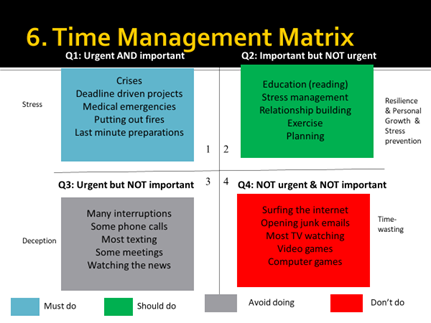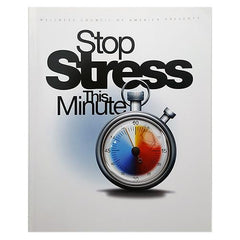
Is the Pandemic Robbing us of Work-Life Balance? Here’s how to get it back.
This is a three-part series on working from home in the era of Covid19. This first installment is written by Lynn Thomas, J.D., who has a consulting business that focuses on HR topics such as executive coaching, change management and emotional intelligence. The next two installments, written by Jim Porter will focus on time management techniques employees can use to work more effectively from home.
Part 1: Helping Managers to help employees working from home.
The Confusion and Uncertainty
Whatever you are experiencing in this new “normal” of Covid19 is ok. No one has ever had to work (or manage employees) remotely under such unforeseen and challenging conditions. I have heard from homebound employees concerned about the negative impact of social isolation, unapologetic emails from supervisors at all hours of the day and night, working longer hours not less, feeling guilty about still having a job, living in their home offices, not being able to stay focused during endless online meetings and more. I thought working from home was going to create more work-life balance, apparently for a lot of employees, it’s just the opposite.
Your Employees
All your employees are still on a learning curve. This unprecedented situation is creating stress, fear, and in some cases, panic. Your employees are overwhelmed, confused, alone, concerned and for good reason: They are trying to be teachers, caretakers, babysitters, shop for their parents, and still be on call for work matters, 24/7. As a result, they feel out of control. They are probably not sleeping well and may be over-eating. Their nerves are frayed.
Why Such Strong Reactions?
Everyone’s routines and schedules have been dramatically changed. According to Bloomberg News “homebound employees are averaging 3 hours more per day than before the lockdown.” Some complain of wearing the same outfit for days, and that every day is “Blursday.” Almost every strategy that we have developed in the past to cope with new situations in our lives will not work in this time of rapid, unforeseen, and dramatic change. We all need some reassurances, guidance, ideas sharing, etc.
Your Vital Role
That is where you as a manager, counselor or EAP specialist come in. You need to genuinely connect with employees to the greatest degree possible. One important new role for you during this time of crisis is to be their coach and cheerleader. You want to create a sense of safety in a sea of uncertainty so they will be transparent with you if they have any issues or concerns. Most of all they need you to show some level of genuine concern.
Start with A Conversation
Do not attempt to connect through emails; that will not work. Start with a phone call or even better an online video session. They need to know you care about them and their families. Ask open-ended questions with compassion and clarity. Listen attentively to their responses. Probe underneath any quick responses for deeper reasoning or root causes.
5 Good Questions to Start Your Conversation
No one was trained on how to manage employees working remotely under these circumstances. We are literally making this up as we go along. So don’t be afraid to try new approaches, new ideas and most importantly don’t be afraid of making mistakes. One day, we all look back on these unprecedented times and wonder how we even made it through. For now, just focus on doing the best you can and then making any necessary adjustments as you go, based on the feedback you receive as the result of reaching out to your employees in any of the five ways described above.
Linkedin Profile: https://www.linkedin.com/in/lynnthomasjd/ Please contact me for a list of the “Best Practices to Work From Home.” which you can send to your employees.
Part 2: Time Management, Covid19 Stress and working from home.
I’ve been working from home since 1990. When I first started, I was also taking care of my young son. Back then almost nobody worked from home, so it was something that you were always trying to cover up. Imagine trying to raise kids, work from home AND cover it up. Now that was stressful.
Fortunately, a lot of the people I called on back then were women (nurses who worked in hospitals) and when they’d hear my son chattering away in the background, they’d usually take a sympathetic view of it all. The men I talked to were not always so charitable: “Are you working from home?” they’d ask in utter disbelief. Now due to Covid19 the whole world is working from home and discovering both its stress management benefits and drawbacks.
I remember putting on Barney the Dinosaur to entertain my two-year-old daughter while I was trying to download the latest version of Microsoft windows onto my computer. Back then, it didn’t download automatically like it does now. Plus, you had to make sure you didn’t interrupt this process in any way, or it would completely ruin your computer. I got distracted by what Barney was doing and took my eyes off of what my daughter was doing. In one split second she reached up and pressed her little finger down on my keyboard and as the result of that ONE keystroke, I had to stop and reboot. The computer never worked right after that.
Certainly, one of the big drawbacks then of working from home, is not being able to give your kids your undivided attention. So every night I would read to my kids, before putting them to bed. Being able to give them my full attention, even for just a half an hour, was so much more satisfying then trying to “babysit” them while I was trying to do something else. (Note to self: multi-tasking is stressful; Single-tasking is not.)
But one of the BIG benefits of working from home – at least for many of us – is a certain amount of flexibility as to when your work gets done. I never had to work strictly from 9-5. And while most of us are on call during those hours, we still have more flexibility to shift work to other times, than we ever had before. One night, while putting my kids to bed, I discovered a simple way to use that flexibility to my advantage.

In order to understand exactly what I did, you need to study the time management matrix above.
In the upper left-hand quadrant are the tasks you MUST do on any given day. These are tasks that are both urgent AND important. (Most of spend our days stuck in this quadrant.) In the upper right quadrant are the things that are important to do but not urgent. Even though these things are just as important as the tasks in quadrant 1, we tend not to do them because they aren’t urgent.
As you can see all the selfcare activities and the stress management activities that we do fall into this same upper right quadrant. They are important to do, but since they aren’t urgent, you can put them off till another day when you are not so busy. Unfortunately, that day never comes.
But the real opportunity for time-shifting comes from taking a careful look at the activities you engage in that are neither urgent nor important. That’s quadrant 4. If you could eliminate some of the time you spend doing quadrant 4 activities and shift that time to quadrant 2, you would be on your way to the top of Abraham Maslow’s self-actualization pyramid!

So, ask yourself, is there any time you spend doing things in quadrant 4, that you can easily shift to quadrant 2? Especially now in the era of Covid19 where we have some extra time available (not commuting, not traveling, not going out to lunch) to shift around. (From this article on work-live balance I read on Bloomberg News, it seems like a lot of us are shifting all our extra time to Quadrant 1 activities. And let me assure you, that is a surefire recipe for BURNOUT!)
So, it was falling asleep one-night WHILE reading to my kids that I had an “aha” moment that would change my life.
Part 3: How to get back your “me-time” in the era of Covid19
When my kids were little, I had just discovered the time management matrix you see above. And I was always looking for ways to shift wasted time spent in quadrant 4 to the useful growth activities of quadrant 2.
But when my kids were young, I felt stretched to the max. I was working from home, starting a business, and taking care of my son while my wife went to work at an office job. She and I were both deprived of relaxation and sleep 24/7.
Sometimes, while reading to my kids before bed, I’d fall asleep in the middle of sentence. My daughter found this very annoying and would always poke me in the ribs to wake me right up. After finishing the story and putting her to bed, I’d go watch TV for a few hours. But sometimes I’d be so wired by the time I’d go to bed at 11:30 PM (after watching the 11 o’clock news) that it would be difficult falling asleep at all. (Note to self: Don’t watch the news – or check your news feed - before bed. Big mistake.)
After months of this routine, it finally occurred to me: Why don’t I just go to bed right after putting the kids to bed? (When I was already feeling naturally tired.) Once I got used to this new schedule, I started sleeping 7-8 hours a night. But the real payoff, wasn’t just getting more sleep, it was waking up by 4 or 5 AM feeling refreshed, rested and ready to work. If, like me, you can work OFF the clock, this time-shifting technique can pay big benefits.
By the time the kids were old enough to pour themselves a bowl of cereal in the morning, I could get in 4 or 5 hours of UNINTERRUPTED time to do whatever I wanted. Since I could work my own hours, this was a real godsend.

Time-shifting helped me find the time to write a book.
But even if you must keep to normal business hours, you can still use this early morning time – before the kids wake up - for “me time.” To work out, stretch, go for a walk, read, or educate yourself in ways that could enhance your career, create a good work-life balance, or even help you start a new business, like I did. This one simple behavioral change (of shifting Quadrant 4 time to Quadrant 2) allowed me to get a regular workout in everyday, write a book and start a home-based business. Apparently, Ben Franklin was right.





James Porter
Author